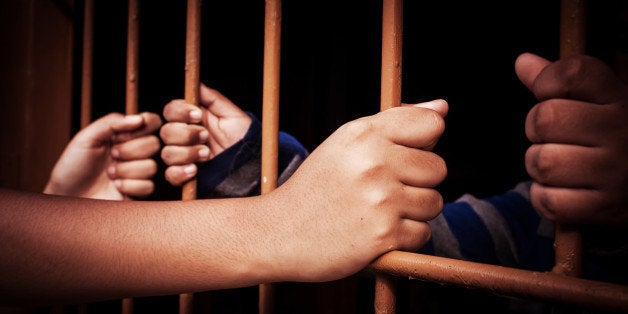
This post was coauthored by Erin Godfrey, Assistant Professor of Applied Psychology, NYU's Steinhardt School of Culture, Education, and Human Development
Summer has begun, and while some kids will be enjoying their first taste of freedom, others will be doing anything but.
On any given day, more than 54,000 youth in the U.S. are being held under lock and key in residential placement facilities. In New York alone, over 1,600 youth are in confinement. And in this current moment, a kid in prison in almost any other State would also be hundreds of miles away from their home. We have essentially taken the structure of the adult corrections system and slapped it on youth.
This should alarm us.
Why have we recreated the adult justice system for youth when we know that youth's development is different, and so are the reasons behind their offending? Brain science tells us that what all kids need most to truly thrive are stable relationships with family, friends, teachers and community members. The most cutting edge research tells us that these types of consistent relationships can actually buffer the impact of poverty and community violence for those kids who are disproportionately exposed to them due to growing inequalities in income and resource distribution. So why have we taken them away from their homes at this critical time in their development? Whether our goal is to promote public safety, community building, or rehabilitation and healthy development -- this is one of the worst things we can do.
There is simply no need for there to be any large non-local prison facilities for youth. These facilities engender practices -- like solitary confinement -- that have been directly recommended against by global human rights organizations. No good, and only tragedy, comes from this. This summer marks the anniversary of Kalief Browder's death. Accused of stealing a backpack, Kalief spent 2 of 3 years awaiting trial in solitary confinement at Rikers Island. He committed suicide last June.
The global health community has been crystal clear that these practices are a violation of human rights. And, in no uncertain terms, the World Health Organization and UNICEF recommend secure confinement in large facilities as an absolute last resort. Instead, they fully support keeping kids involved with crime closer to their communities. These are promising recommendations. Countries with fewer large youth prisons have much lower rates of youth crime. And, within the U.S., cities that support community-based alternatives to youth confinement have, on average, lower youth recidivism rates.
N.Y.C. is taking this to heart. It is shifting from an adult corrections structure to one in which youth -- even after they have been found guilty -- can be placed in small, local, residential facilities close to their families and neighborhoods, and attend local schools during their stay. This "close to home" initiative represents a change to the laws that govern how the system responds to youth in NYC. Because they are legislated, they have lasting power.
If a juvenile justice system as large and complex as N.Y.C. can take this big step, why aren't more cities following suit? There is no need for youth prisons. What we do need is a more equitable distribution of resources so that kids can stay close to the relationships and resources that they need to thrive.
N.Y.C.'s juvenile justice system is far from perfect, however. We know it is succeeding in actually keeping youth close to home, but that is all we know. We need to know more about how these local facilities work. Are families actually visiting kids more often? Are kids being connected with local services, both during and after their confinement? Are they succeeding more in their local schools? And ultimately, can this initiative result in a reduced rate of recidivism so that fewer kids end up being confined - either inside or outside of the city?
Would placing Kalief closer to home have prevented his death? We don't know, but we need to find out.
